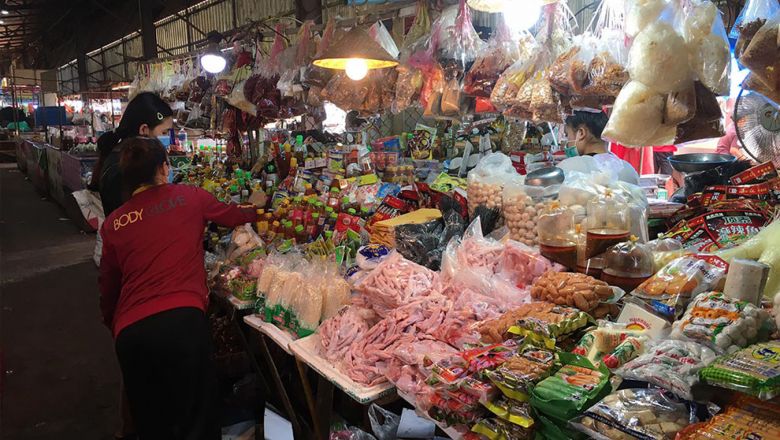Inflation continues to rise in Laos amid Covid-19 crisis
Inflation continues to rise in Laos amid Covid-19 crisis
The year-on-year inflation rate continued to rise in Laos last month amid economic distress triggered by the Covid-19 pandemic.

According to the Lao Statistics Bureau, the Consumer Price Index (CPI) stood at 114.42 points last month, indicating an inflation rate of 2.48 per cent year-on-year. This was up from the 1.91 per cent recorded in February.
Economists are concerned that the interruption of economic activities by a second wave of novel coronavirus infections and lockdown measures imposed in the capital Vientiane and other provinces could further affect prices of products in local markets.
Rising food prices and the weakening value of the kip against the Thai baht and US dollar are among the main drivers of inflation in Laos, despite the government’s attempts to manage prices of products in domestic markets.
The prices of rice, meat and other fresh food items have continued to rise, while the price of fuel has gone up due to taxes increasing in line with the cost of oil imports.
Vientiane mainly depends on food items supplied from different provinces, including beef, pork and vegetables, and travel restriction may impact the prices of food products in the capital.
According to the Lao Statistics Bureau, the cost of food and non-alcoholic beverages surged by 2.81 per cent year-on-year, and 0.94 per cent month-on-month.
For instance, the price of rice rose by 1.41 per cent month-on-month, and the rates of fish and seafood by 2.03 per cent. The price of pork surged by 14.25 per cent year-on-year, beef by 8.8 per cent, poultry by 1.3 per cent, fresh vegetables by 8.62 per cent, and seasonings by 12.64 per cent.
The cost of household goods went up by 0.22 per cent month-on-month, and 3.17 per cent year-on-year. The price of internal decoration items went up by 4.4 per cent year-on-year, furniture by 2.33 per cent, mattresses and mattress pads by 5.1 per cent, and kitchen items by 2.71 per cent.
Prices of medical care items climbed by 0.16 per cent month-on-month and 3.36 per cent year-on-year, and the cost of medicines and medical equipment increased by 2.54 per cent year-on-year. The cost of medical treatment in hospitals rose by 4.15 per cent year-on-year.
Costs in the communication and transport category rose by 1.1 per cent month-on-month and 3.41 per cent year-on-year. For instance, the price of vehicles rose by 3.15 per cent year-on-year, transport items by 5.29 per cent and fuel by 10.36 per cent.
The value of beauty services surged by 1.04 per cent year-on-year, precious metals by 22.52 per cent, and decorated gold by 27.87 per cent. In 2020, inflation in Laos averaged at around 5.07 per cent, up from 3.32 per cent recorded in 2019.
The government has encouraged local farmers to boost their productivity in order to minimise imports from neighbouring countries.
However, domestic production is still not as strong as anticipated and it is still unable to meet the market demands. For instance, red onions, garlic, carrots and mushrooms have to be imported since the production cost for these crops remains high in Laos.



